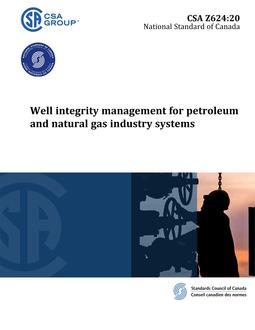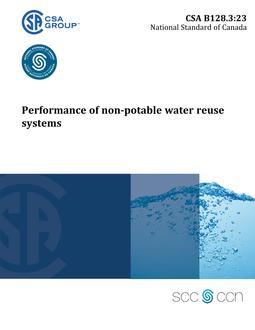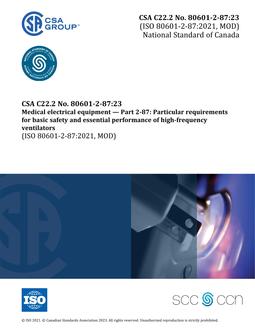
CSA Z624:20
Click here to purchase
Preface:
This is the first edition of CSA Z624, Well integrity management for petroleum and natural gas industry systems.
CSA Group acknowledges that the development of this Standard was made possible, in part, by the support of the regulatory authorities and industry participants.
This Standard has been developed in compliance with Standards Council of Canada requirements for National Standards of Canada. It has been published as a National Standard of Canada by CSA Group.
Scope:
This Standard covers the integrity management for the life cycle of wells in the land-based upstream sector of the petroleum and natural gas industry.
1.1
The purpose of this Standard is to provide minimum requirements for ensuring well integrity, for the upstream sector of the petroleum and natural gas industry.
1.2
The Standard addresses
a) well integrity management framework;
b) design;
c) well construction;
d) operation;
e) intervention; and
f) decommission.
Note: Design will be referenced in this Standard; the details are covered in CSA Z625.
1.3
This Standard does not apply to
a) offshore applications;
b) unlicensed wells;
c) geo-thermal.
1.4
It is not the intent of this Standard to prevent the development of new equipment or practices, nor to prescribe how such innovations are to be handled.
1.5
Where the requirements of this Standard differ from the requirements of other standards or codes referenced herein, the requirements of this Standard take precedence.
1.6
The requirements of this Standard do not apply retroactively to existing wells and wells under construction at the time of publication, but they do apply if the well is subjected to, or anticipated to experience, any changes in configuration, condition, life cycle phase, or status.
1.7
In CSA Standards, “shall” is used to express a requirement, i.e., a provision that the user is obliged to satisfy in order to comply with the standard; “should” is used to express a recommendation or that which is advised but not required; “may” is used to express an option or that which is permissible within the limits of the standard; and “can” is used to express possibility or capability. Notes accompanying clauses do not include requirements or alternative requirements; the purpose of a note accompanying a clause is to separate from the text explanatory or informative material. Notes to tables and figures are considered part of the table or figure and may be written as requirements. Annexes are designated normative (mandatory) or informative (non-mandatory) to define their application.
Product Details
- Edition:
- 1st
- Published:
- 09/01/2020
- ISBN(s):
- 9781488331985
- Number of Pages:
- 46
- File Size:
- 1 file , 2.3 MB
- Product Code(s):
- 2428517, 2428517


